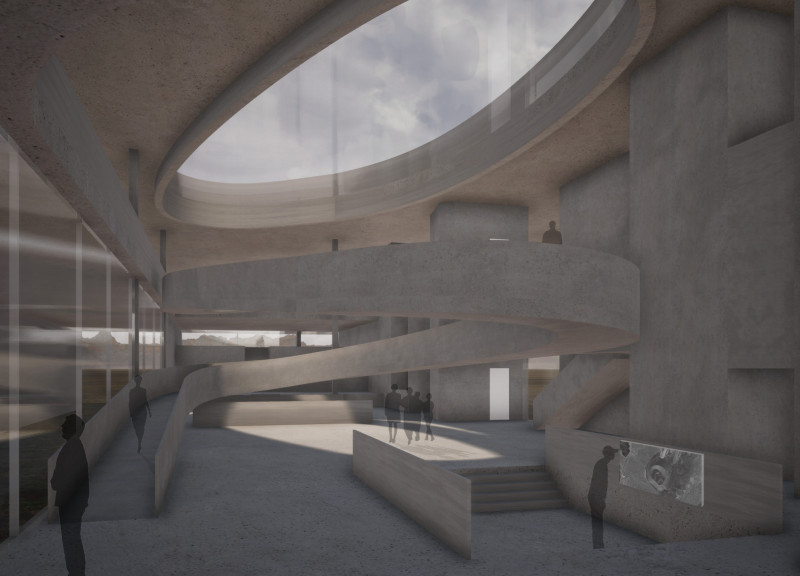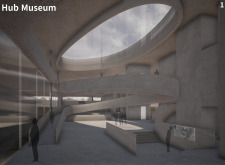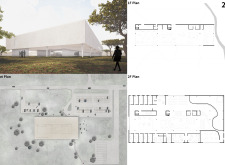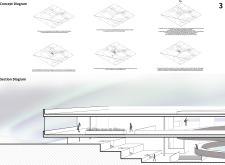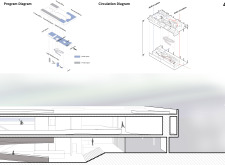5 key facts about this project
Designed to promote accessibility and interaction, the Hub Museum integrates natural elements, fostering a seamless transition between the built environment and the landscape. The design emphasizes fluidity and movement, which are reflected in the building's curvilinear forms and carefully planned circulation routes. The layout encourages exploration, inviting visitors to navigate through various exhibition halls and communal spaces with ease.
Key components of the project include expansive glass façades that promote transparency and enhance the connection between indoor and outdoor environments. This use of glass not only allows an abundance of natural light to flood the interior spaces but also visually links the museum to its surroundings. Visitors can enjoy views of the natural landscape, creating an atmosphere that inspires contemplation and appreciation of both art and nature.
Structural elements such as concrete provide a strong foundation for the building while contributing to its modern aesthetic. The raw finish of the concrete stands in contrast to the sleekness of the glass, balancing solidity with lightness. Additionally, timber is incorporated in various areas, such as exhibition spaces and furnishings, to introduce warmth and tactile quality to the overall design. This thoughtful consideration of materials enhances the visitor experience and reinforces the museum's mission of inclusivity.
The architectural plans showcase a well-organized layout, with distinct zones for public engagement and private contemplation. The arrangement of spaces allows for multiple functions, including exhibitions, educational programs, and community events. Such versatility is central to the Hub Museum's identity, as it seeks to cater to diverse audiences and foster cultural exchange.
Unique design approaches can be found in features like the spiraled staircase, which serves as a central element within the museum. This architectural detail not only facilitates movement between floors but also acts as a visual focal point, encouraging visitors to linger and appreciate the surrounding artworks. The incorporation of art installations, such as the Rainbow Lamp, highlights the museum’s commitment to creating immersive experiences, enhancing the ambiance throughout the building.
In summary, the Hub Museum is a carefully considered architectural project that harmonizes its design with its function and environment. It embodies principles of accessibility, community engagement, and environmental integration, making it a vital addition to the cultural landscape. For those interested in a more in-depth understanding, exploring the architectural plans, sections, and unique designs will reveal further insights into the innovative ideas behind this project. Discover the intricacies of its design to appreciate how the Hub Museum serves as a beacon of culture and connectivity.


